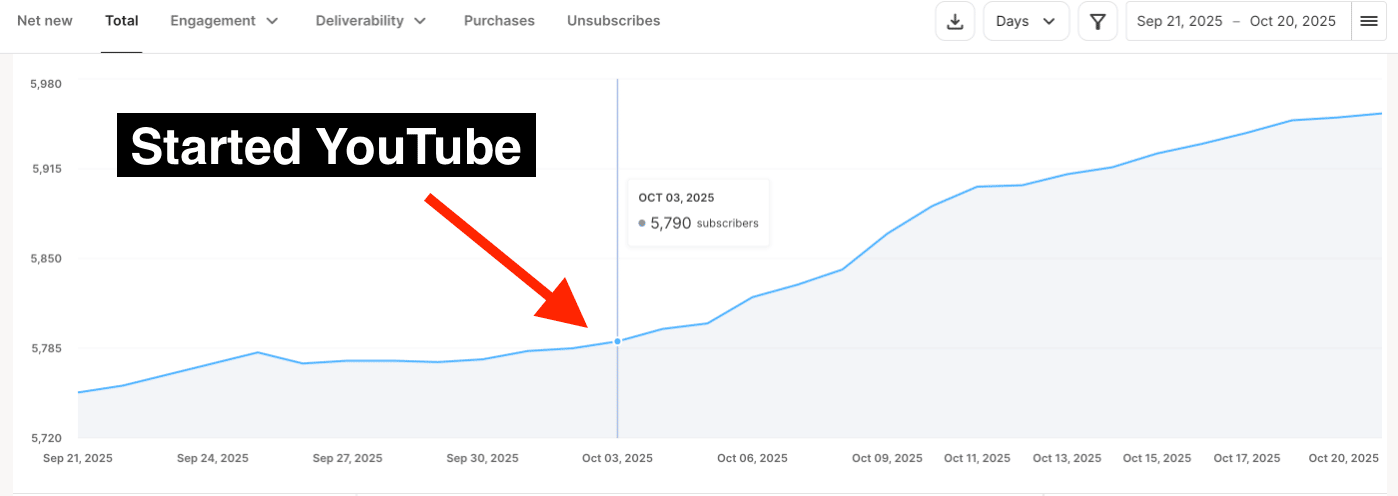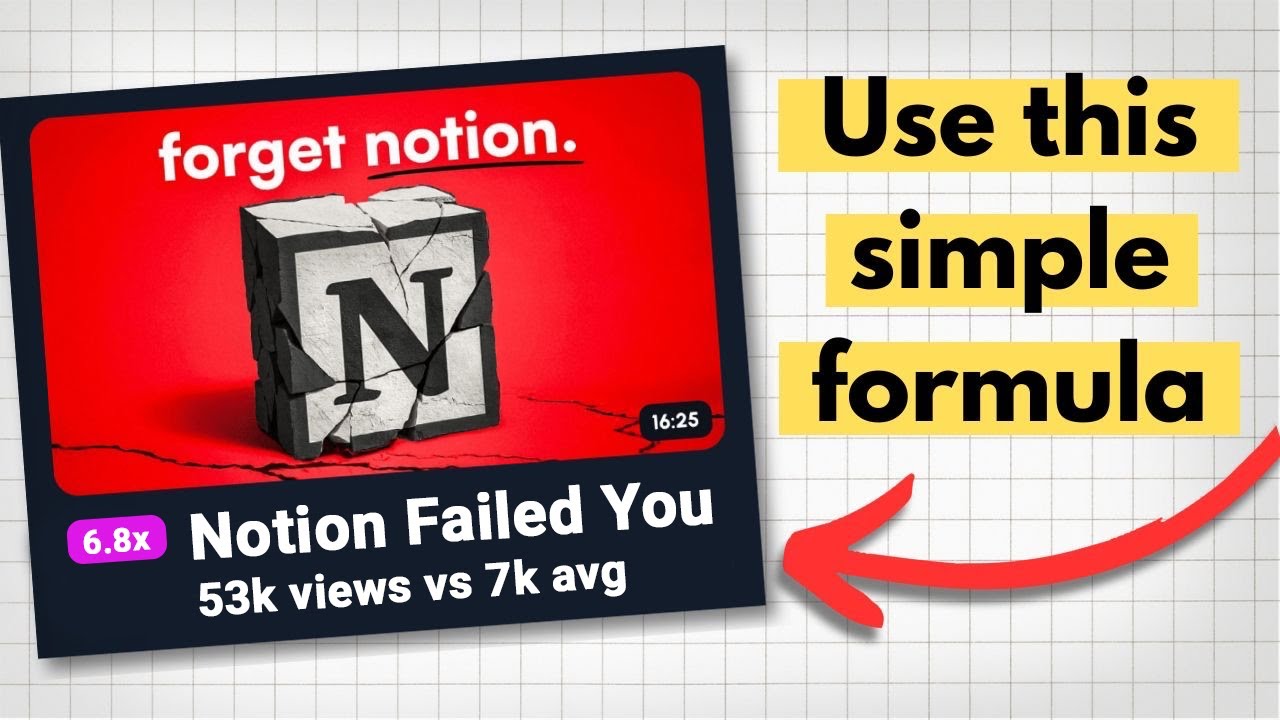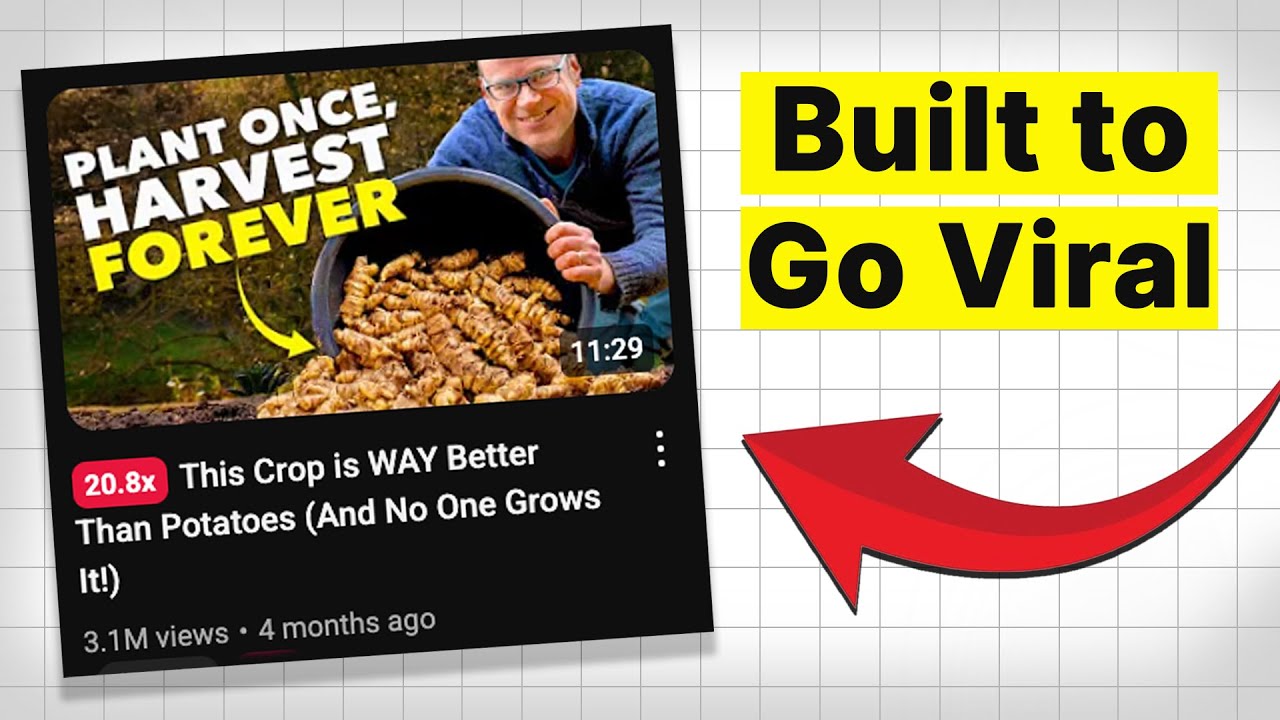Your Scriptwriting Partner
Learn to write more engaging YouTube scripts in under 2 minutes every Friday.



.webp)
After implementing this, our end screen click rate went from ~3% in our videos up to 15%+ for some videos.

Jay Clouse
@jayclouse
5.5m+ Views
110k+ Subcribers

Ali Abdaal
@aliabdaal
450m+ Views
5.9m+ Subcribers
One of the biggest obstacles to improving as a creator is not knowing what you're doing wrong and working with George provided the clarity we needed to identify these areas.

Abi Connick
@abiconnick
27m+ Views
389k+ Subcribers

Ed Lawrence
@Ed_FilmBooth
26m+ Views
375k+ Subcribers
He’s great at scripting YouTube content, and during the time we spent working together we created several videos that hit multiple millions of views.

Mike Shake
@mikeshake
764m+ Views
4m+ Subcribers

ConvertKit
@ConvertKit
20m+ Views
36k+ Subcribers
After implementing this, our end screen click rate went from ~3% in our videos up to 15%+ for some videos.

Jay Clouse
@jayclouse
5.5m+ Views
110k+ Subcribers

Ali Abdaal
@aliabdaal
450m+ Views
5.9m+ Subcribers
One of the biggest obstacles to improving as a creator is not knowing what you're doing wrong and working with George provided the clarity we needed to identify these areas.

Abi Connick
@abiconnick
27m+ Views
389k+ Subcribers

Ed Lawrence
@Ed_FilmBooth
26m+ Views
375k+ Subcribers
He’s great at scripting YouTube content, and during the time we spent working together we created several videos that hit multiple millions of views.

Mike Shake
@mikeshake
764m+ Views
4m+ Subcribers

ConvertKit
@ConvertKit
20m+ Views
36k+ Subcribers
Featured In


Trusted by some of the world's biggest creators















"Write On Time" Newsletter
Join 5,000+ scriptwriting nerds reading “Write On Time”.
Insights from writing for multi-million subscriber YouTubers sent to your inbox every Friday
The YouTube Scriptwriting Playbook
Get more views and scale your channel faster with a repeatable scriptwriting system.
Start with a half-formed video idea. Leave with a retention optimized script that's ready to record.
.svg)
Work With Me
Work directly with me through 1-1 coaching, script reviews and retention analysis.
Understand how to turn scriptwriting into your most valuable asset - so your viewers become loyal fans who click, comment and convert.

ScriptKit
Get the exact tools I use to run my 6-figure YouTube scriptwriting business.
These tools help me create better YouTube videos for clients, reach thousands through written content, and run a $100k+ per year business.
FREE Resources for YouTubers
Trusted by 5000+ creators.
I'm giving away the templates I developed while writing for Ali Abdaal, Mike Shake, and many more. Scripts written on these templates have gained millions of views.
The Retention Hub
80+ retention graph reviews. 40+ niches. All in a single database.
Filter by niche, views, retention problem (etc), to find advice that applies directly to your content.
Write On Time

Why I’m ignoring my YouTube Studio data.
There will come a moment in your YouTube career where you face a difficult decision like this one.
So stick with me for this quick story, because you never know when it might come in handy.
This week, I had a conversation with a scriptwriting student of mine.
He was trying to figure out what type of content to make in the next 6 months, but had run into a problem that you might recognise.
Here's a (paraphrased) version of our conversation:
Student: “I want to grow my channel faster.”
George: “Ok. Why?”
Student: "To funnel more clients into my program.”
George: “Great, what’s your program about?”
Student: “It’s about [A]”
George: “Perfect. So make videos about [A]”
Student: “Oh but here’s the thing, you delightful idiot-” [he didn’t say that part] “-my best performing video is about [X], so if I want to grow my channel faster and make more sales, shouldn’t I just make more of that?”
George: “Would that video appeal to the audience you’re trying to build?”
Student: “No.”
George: “Or the clients you’re trying to reach?”
Student: “No.”
George: “Do you want to make that video?”
Student: “Oh, definitely not - it’s actually annoying that people associate me with [X] when I’m trying to sell [A].”
Now, the solution to this problem does look pretty simple when summarised like this, doesn’t it?
“Stop making videos about [X]; make videos about [A].”
But, when it comes to YouTube, we are constantly told to follow the signals.
And this... can be confusing in moments like this.
Of course, we DO want our decisions to be guided by data. But data can be distracting.
I know this because I’m going through something similar to my student right now.
I’ve just launched my own channel, and… YouTube doesn’t know who the hell I am yet.
That means I'm receiving "signals" from YouTube that would usually convince me to change course. For example:
- My first 30s retention is terrible.
- I have 90% new viewers, almost no casual or returning.
- And, when I dig into the data a little, I can see one of my videos is being recommended by another called “Cool Uncle Mods: Jailbreaking the Kindle 4”.
These signals are confusing.
Or, they would be... if I weren't choosing to ignore them completely.
So, why am I ignoring the data? Well... it's actually quite simple.
I have my ideal audience in mind, and I accept that it’s going to take 2-3 months of relentlessly, consistently staying the course to find them.
That means:
- Uploading videos for the audience I want to build (and only them).
- Scripting my videos to speak to the customers I want to attract.
- Accepting that this will not happen overnight, and therefore remaining devoted to my guiding direction.
Once I find (or, rather, YouTube finds me) the audience I need, then I can listen to the signals.
I'll get bogged down in YouTube Studio figuring out how to fix my retention, my CTR, and my idea selection.
But for now, direction supersedes data.
Likewise, everything in my students’ data is telling him to make more videos about [X].
But that data is not valuable to him anymore, because he wants to build an audience who care about [A].
Again: Direction supersedes data.
All this to say, there will be moments where you have to choose to ignore your data.
And that’s really difficult.
But when the time comes, I know you’ll do it - if you have a bigger, more important directional goal for your channel in mind.
And, if you’re interested, here’s me staying the course in my latest video (dropped today!):

That's all for this week.
Any questions? You can to reply to this email and I'll get back to you.
Speak soon,
George 👋
P.S. Newsletter cutting room floor here. I was trying to get this metaphor in somewhere, but I lost confidence that it actually made any sense. Anyway, see what you think:
“If I was sailing from Ireland to Canada, I wouldn’t dock in Greenland just because they had a nice shiny lighthouse.”
Put that on a T-shirt and smoke it!

YouTubers: don't let Instagram distract you
YouTube is 31x more efficient at generating leads for my business than Instagram.
(And it's got a lot to do with how easy it is to write an effective CTA.)
Let me explain:
22 weeks ago, I started my business Instagram with the intention of replacing the traffic I used to get from Twitter.
(Miss u, Twitter xxxx)
The perceived "lower effort" of writing and filming a Reel (vs a YouTube video) drew me in.
But, after figuring out a more efficient system for writing YouTube scripts in less time (a combination of my YTSP scriptwriting system and the advice I give in this video)...
...I re-launched my YouTube channel as well.
So this week, I wanted to crunch the numbers.
Even at this early stage, I wanted to know:
- Which platform had been more effective at generating leads.
- How much time input was required per lead?
(I mean, between you and me, I knew YouTube was going to win... 👀)
...but the extent of the victory shocked me 😆
In the below stats, a "lead" is somebody who joined this newsletter via a lead magnet promoted by the piece of content.
Instagram (started 22 weeks ago)
- Videos: 11
- Views: 4500
- Leads: 4
- Average time to script + film one video: 70 minutes
Average time input per lead: 192.5 minutes
YouTube (started 3 weeks ago)
- Videos: 4
- Views: 2300
- Leads: 79
- Average time to script + film one video: 120 minutes
Average time input per lead: 6.1 minutes
Ok, so... let's address the elephant in the room.
"You only made 11 Reels and gave up."
True. But is it any surprise?
Instagram nerds will tell you that, to properly grow on Instagram, you need to post daily.
So, assuming you only have 3-4 hours per week to write and film content...
...Instagram is a non-starter.
YouTube, on the other hand? 😍
3-4 hours per week is plenty of time for most channels to write and film a video (again, combining my writing system + advice hyperlinked above).
And approx. 1 video per week has already had a non-trivial impact on newsletter sign ups and even sales.

And my channel is still tiny.
Some of you, reading this, will already know exactly how impactful YouTube can be at 100x these numbers.
But why is there such a disparity?
My business is just a single example, but I don't think it's atypical.
And I believe it comes down to two key factors across both platforms that grossly affect how many leads they generate:
1/ How easily can you convince the viewer to click?
- YouTube: Viewers build more trust from a single piece of content. When you're delivering 10 minutes of value, the viewer has more patience to listen to a 15 second plug.
- Instagram: Viewers have less time to build trust. Plus, while already trying to cram a tonne of information and nuance to a short video, you probably only have 3-5 seconds to include a plug.
Takeaway: Long-form YouTube content, as a medium, is just better set up to build trust and allow you space to script a convincing plug.
2/ How physically easy is it for the viewer to click?
- YouTube: QR codes on-screen allow TV viewers to "click", and links in your description + pinned comment make it way easier for PC and mobile viewer to click.
- Instagram: Viewer can navigate to your link in bio, or a third party tool like ManyChat can be used (but these require the viewer to comment to receive the lead magnet).
Takeaway: YouTube viewers can access your links with a single click. For Instagram users, there's more friction.
All that being said... I still have a presence on Instagram.
My partner, Julia, converts all my newsletters into carousels, and we double-post those on LinkedIn as well.
There's no harm in keeping a presence elsewhere, if it doesn't distract you from the highest leverage platform (YouTube).
So... if you want to see my highest-converting lead magnet so far, check out this video:

Watch the video here.
The cool part is... I never explicitly tell the viewer to click the link.
But, because of the natural trust-building format of long-form YouTube content, a simple link at the top of the description is sufficient.
That's all for this week.
Any questions? You can to reply to this email and I'll get back to you.
Speak soon,
George 👋

The hook mistake made by 100k+ channels
Today, I've got something essential to keep in mind when writing your next hook.
Specifically, if your hook ends with a "rule of three".
A rule of three usually appears at the end of a hook and sounds like this:
"So in this video, we're going to cover:
- [Topic 1]
- [Topic 2]
- And [topic 3]"
Having a video that answers multiple questions like this is great because:
- We can really sell the amount of value in our video.
- We can set up the video's structure, which is essential to keeping the viewer oriented and engaged later.
But here's the problem:
The choice of which three things you mention is more important than you'd think.
It's not as simple as choosing "the most interesting three topics from the video".
And I've seen channels with 100k+ subscribers get this wrong (and their retention has suffered because of it).
For example, let's imagine a video called "Best laptop for small businesses in 2025".
In the past, I've seen channels who made the mistake of writing something like this at the end of their hook:
"So in this video, we're going to cover:
- The huge problem with Sony laptops in 2025.
- The unexpected realities of Apple's new M5 chips.
- And which laptop is right for small business owners in 2025."
But... why is this a problem?
All three bullet points sound exciting and, more importantly, relevant to the topic.
But here's the issue:
While it might feel like a good idea to pick the three most exciting topics from your video and mention those at the end of your hook, this can actually disrupt the viewer’s sense of the video’s structure.
(And, remember, structure is key to retention - and setting up that structure in the hook is essential.)
By putting three equally important topics side-by-side, it makes it more difficult for the viewer to latch on to the primary question.
The primary question is the reason they clicked - and it's probably the question expressed in the title (in this case, "which laptop should I buy as a small business?")
Instead, the rule of three should include two supporting questions and then the primary question.
In our laptop example, it might look like this:
"So in this video, we're going to cover:
- The key features of each laptop.
- How their spec will affect your day-to-day workflow.
- And, ultimately which laptop is right for small business owners in 2025."
As our video progresses, we want our viewers to retain complete clarity about why they're watching.
And muddying the waters in the hook by expressing three equally important-sounding ideas makes it more likely they'll lose that clarity later on.
That's not to say that our laptop video can't include discussions about "the problem with Sony laptops in 2025", or "the unexpected realities of Apple's new M5 chips"... but we should avoid using these in our "rule of three" during the hook.
I've got two more quickfire examples below if you're still not 100% clear on what a "good" vs "bad" rule of three looks like, but first...
New Video Just Dropped
7 YouTube Scriptwriting Hacks (from 40m Views)

After launching my channel two weeks ago, video #4 just dropped. Feel free to check it out!
Quickfire Examples: "Good" vs "Bad" Rule of Three
Title: How to Stop Procrastinating and Actually Get Things Done
❌ Bad rule of three:
“So in this video, we’ll talk about:
- The best productivity advice I ever received.
- The daily habits of highly successful people.
- How to stop procrastinating and actually get things done.”
All three sound like different videos, and I might even be more compelled by the first bullet than the third.
✅ Good rule of three:
“So in this video, we’ll talk about:
- The common triggers that cause procrastination.
- What’s really happening in your brain when you procrastinate.
- How to stop procrastinating and actually get things done.”
The first two ideas flow naturally into the third.
Title: THIS Is Why You Can't Build Muscle Consistently
❌ Bad rule of three:
“So in this video, we’ll talk about:
- How sleep impacts your metabolism.
- Why you're probably tracking your workouts wrong.
- How to finally start building muscle consistently.”
As above, my attention is pulled equally to bullets 1 and 2 as it is to bullet 3.
✅ Good rule of three:
“So in this video, we’ll talk about:
- How to set effective calorie targets during your training.
- How to avoid overtraining so you don't waste your progress.
- And, ultimately, how to start building muscle consistently.”
The first two ideas flow naturally into the third.
That's all for this week.
Any questions? You can to reply to this email and I'll get back to you.
Speak soon,
George 👋
Trusted by creators in a bunch of niches







I've written for 10+ channels, advised on content from 40+ niches, and consulted with 10,000,000+ subscriber creators.
People have said nice things!

Ali Abdaal
@aliabdaal
400m+ Views
5m+ Subcribers

Justin Moore
@creatorwizard
470k+ Views
46k+ Subcribers

Abi Connick
@abiconnick
21m+ Views
322k+ Subcribers

Jake Thomas
@creatorhooks
6m+ Views
40k+ Subcribers

Mike Shake
@mikeshake
650m+ Views
3.3m+ Subcribers

Creator Booth
@creatorbooth
1m+ Views
34k+ Subcribers

Hey, I’m George 👋
I started as a full-time scriptwriter for Ali Abdaal, and have since worked with creators between 30,000 subscribers, all the way up to 10,000,000+.
I'm on a mission to educate both YouTubers and writers about the impact scriptwriting can have on a channel.
Whether your goal is to increase retention, grow a loyal audience, boost AVD, skyrocket end-screen CTR, or simply make the process of making a video less stressful…
...I'm here to help you do that through smartly scripted YouTube videos.
+
k+
m+
Latest Podcast Episodes
Create more engaging videos with simple, actionable scriptwriting tips.
Join 5,000+ scriptwriting nerds reading “Write On Time”. Insights from writing for multi-million subscriber YouTubers sent to your inbox every Friday.

.png)
.png)

.jpg)






